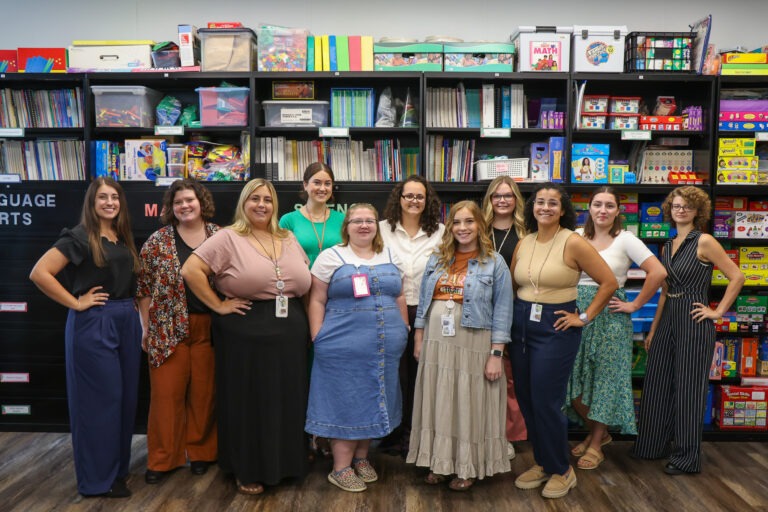WVU Parkersburg Successfully Transitions to Virtual Environment

Parkersburg, W.Va. (October 13, 2020) – Many students at West Virginia University at Parkersburg have made the transition to online courses. While about 25 percent of students visit campus to complete hands-on courses that could not be converted to fully online, all students are using technology-enabled tools to complete the remainder of their coursework. Faculty members started transitioning to online learning in March due to COVID-19.
As Holly Martin, associate professor, explains, “One thing that I love about teaching is the interaction with students in a face-to-face class. Creating that same sense of community in a virtual setting was one thing I mostly focused on when preparing my classes this semester.” Martin uses at least three means of communication with students. “Constant communication and timely feedback are critical for a virtual class,” she said.
College faculty are teaching in a variety of ways. Many students meet with faculty and classmates on the same day and time in a virtual manner. Synchronous online learning is a new teaching method many faculty are embracing. Synchronous learning means the faculty and students are interacting at the same time.
As WVU Parkersburg Provost Chad Crumbaker explains, “WVUP faculty have taken technology-enabled instruction to the next level by finding various ways to truly engage with learners without being in a traditional classroom setting.”
WVU Parkersburg has more than 50 degree programs students can choose from. Five of these programs are fully online, regardless of how instruction is delivered to the other programs.
Assistant Professor Katie Life uses online instruction to allow her students to take more ownership of their learning in her math classes. Using a ‘flipped-style classroom,’ students watch the lecture as homework before the class, then spend their class time on higher-level development of the concept by completing projects, practicing harder example problems and discussing the concept more in-depth.
“With the virtual environments, it’s like the material never grows cold. We’re crafting all of these different layers to the learning process week after week after week,” Life said. “It’s really made me reconsider how I will teach once the pandemic has passed, honestly. I’ve learned a lot about myself and what my students can do.”
Assistant Professor Dr. Billy Stone also takes advantage of recording his lectures. “Student feedback shows they enjoy the ability to refer to the recording to review class discussions,” Stone said. “It’s especially helpful should the student be absent from a Zoom meeting.”
Some faculty do prefer more traditional online teaching methods but take extra precautions to engage students. As Tom Riddle, associate professor, explains, “Online learning is lonely. There is less social interaction, and that makes motivation harder.” However, he has found that students enjoy the flexibility in doing their work any time. “I notice many of my students seem to be night owls, and I get many early morning emails.”
Although students no longer commute to campus, they can receive Tutoring Center services and sessions through Zoom. Students can also take advantage of Brainfuse, which offers free tutoring and proofreading services 24/7.
Students struggling with online learning may visit the college’s Distance Learning page to seek assistance.
“Online learning is a perfect example of the need for a community college,” Adjunct Professor Terry Tamburini said. “Many students were headed to other institutions and chose WVU Parkersburg to save money.”
Tamburini also found that students are taking advantage of online learning to expand their skill sets. “Some of my students seem older with a desire to use the opportunity for job upgrades.”
Visit wvup.edu/future-students or call 304.424.8310 to view WVU Parkersburg’s majors, cost and aid and other services.


